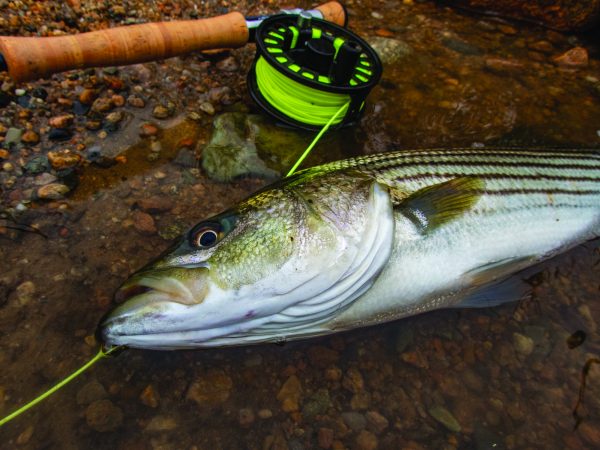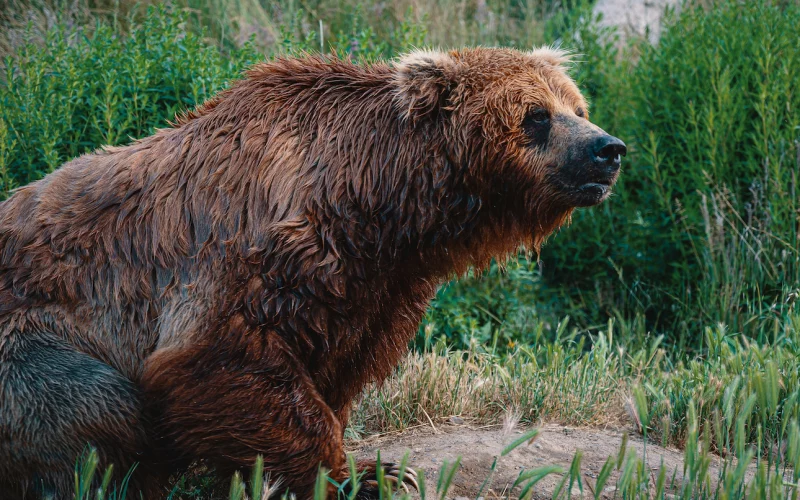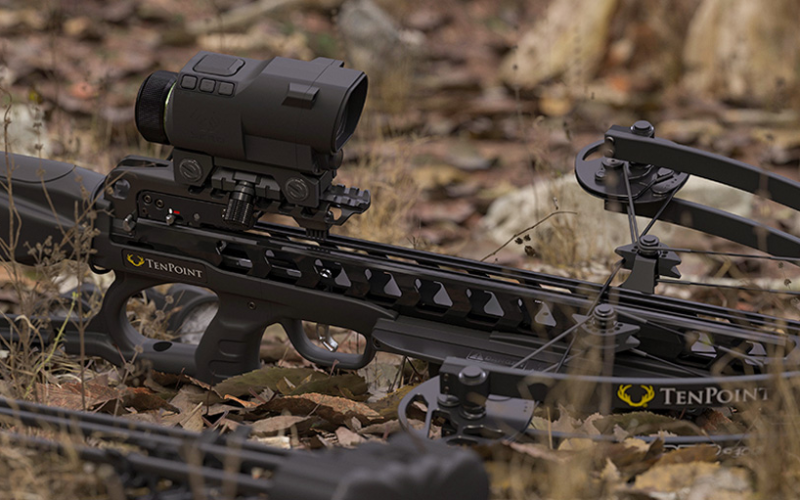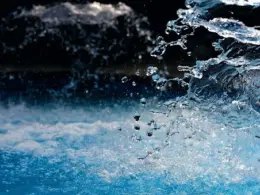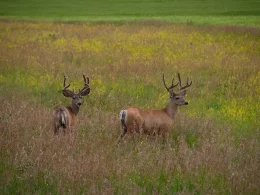Recently, I took my girlfriend fly fishing because she seemed eager to learn and see how I did it. Well, that eagerness faded quickly because if you fly fish, especially for trout, you understand that the word “nymph” isn’t the sexiest.
We got to the north Georgia trout stream in the morning and paid for our parking at the park, actually I paid for the parking. I had my chest pack and rod in its case with my net as well. We got to the stream and I began to teach her how to put the rod together. The next 5 minutes turned out to be the easiest of the day. We quickly lined up the dots and put 4 rod pieces together and then added the reel to its seat. I strapped on the chest pack while she laughed at me, and then tied on the flies. I had premeditated how this fishing trip would go so I skipped over any knot tying to save my own patience and temper, and we moved onto the flies.
Table of Contents
Teaching The Basics
Up until this point everything was straightforward and she understood everything. The second I pulled out my fly box to rig up two nymphs and an indicator is when shit hit the fan, as much as it could in this situation. I started to teach her the basics of bugs and what trout like to eat. I know this might be the least attractive thing to explain to your significant other, but I wanted to teach and she showed interest initially.
For some context, it was June in Georgia and trout had been stocked recently and it had been raining all week. So I was going to tie on a Pat’s Rubber Legs and a run of the mill junk worm fly. I skipped over the worm because she had seen one before, and moved onto the stonefly nymph. I got carried away quickly, I started to tell her the fly imitates something called a stonefly nymph which is like the “baby version” of what flies around in the air once it hatches.
It is laid into the water by the banks by the adult and hatches on the streambed as a nymph. It hugs rocks and sticks at the bottom of the river and slowly grows until it is ready to hatch. Just as it begins to hatch, it will swim to the surface and hatch its wings as it drifts down the water onto the bank. It crawls out and begins to fly around before it mates and dies on the water or gets blown onto the water by the wind. Trout love a stonefly because it presents a big meal both at the nymph and adult spent stage of its life. I rambled on about my time spent in Montana fishing with salmon fly imitations on blue-ribbon trout streams in the late summer. I tried to pass on my excitement describing a giant flying bug that makes big fish jump. At this point, she gave me a look that said “move on,” so I did.
How to Fly Cast
The next portion of our “lesson” was fly casting. My girlfriend is not the first person I have taught to fly cast. My dad, brother, and a few friends have gotten the basics down from my mediocre teaching. At the stream after the rod was rigged up I casted a few times to show her the basics. Based on my extremely limited experience, the advice of a 10 o’clock to 2 o’clock casting motion is not good advice.
It seems like most beginners mess up the first 30% of the cast which throws the 10-2 motion off. The best visualization I took from somebody smarter than me on YouTube (I wish I could remember who) is to have the caster pretend to dip the tip of their rod into some paint on the ground and imagine themselves “splattering” that paint on a wall directly behind them. This accomplishes two things: the first being that the typical mistake of starting the cast too high is eliminated. The caster starts their cast from the surface of the water and by visualizing the paint splattering, they speed up and stop to let the fly line roll behind them.
The second thing this accomplishes is a pause between the backward and the forward cast. After the caster “splatters the paint” they stop because of the “wall” that is behind them. This allows the line to roll out and stops the rod from drifting back to far and hitting the ground. Overall, after just this simple visualization, she was able to cast well enough to fish and have a decent drift.
How to Roll Cast
After fishing for a few minutes where there were no trees near her cast, we moved to a new spot and I showed her the roll cast. This was again, fairly simple for her to pick up on. All I did to help was get the fly line all the way downstream of us so she could take the rod and flick it upstream to do the roll cast. I helped her a couple of times and she even hooked a fish while practicing drifting the flies downstream. After that she got bored and I took over, and fished a few holes without picking up anything. I changed flies and we moved downstream with still no bites or fish sightings.
Mending A Fly
Soon after I convinced her to let me keep teaching before we left the river. I got her in a new spot further downstream and we practiced mending. In all honesty I have no idea how to teach somebody to mend the line during a drift, especially when the water currents are all over the place. In my opinion, mending is a “feel” thing, not to sound too pretentious. When I mend the line I just watch my indicator and remaining fly line and mend where I feel like I need to. This teaching method did not transfer well at all! She began trying to drift the nymphs over a pool with some faster water on the other side of the bank. The drift would begin to look good and when the line made it directly in front of us, her flies got pulled and dragged by the fast water and ruined the drift.
Here I tried to explain that she needs to mend the line downstream without moving the indicator, in order to keep the flies where they need to be and not spook the fish by mending so aggressively. Nothing I said or did fixed her drift, maybe I suck or maybe she does. Either way we both quit in a way and I proceeded to catch no fish.
We Caught One!
We hiked down the river more, and I tied on a streamer as a last ditch effort before we headed home. I put an olive wooly bugger on some 3x tippet and hoped for the best. She stood beside me as I fished a shallow pool with a small tree laying perpendicular in the water on the far side bank. I made a few casts upstream and had one chase it but nothing committed. I screeched like a little girl seeing a 10 inch rainbow chase my streamer and then refuse it at the last second. I switched up and started the streamer 45 degrees downstream and stripped across that way. A few casts like this landed me a 12 inch brown trout (a rare fish for the stretch of river). This being the only fish I landed made both me and my girlfriend’s day. I successfully taught her the extreme basics of fly fishing without getting broken up with in frustration, and landed one single fish. We hiked back to the car satisfied with what felt like 5 hours of fishing, but ended up only being about 2.
In Conclusion
Hopefully, you can introduce a loved one or stranger to the hobby of fly fishing. In my experience if someone has enough discipline to learn the basics, fly fishing can always be a fun way to turn off your brain for an afternoon. My biggest takeaways from this teaching and learning experience were few and far between. However, I will always start with the paint splatter casting technique, and next time I might skip over the entomology of bugs for a first time fly fisherman.

